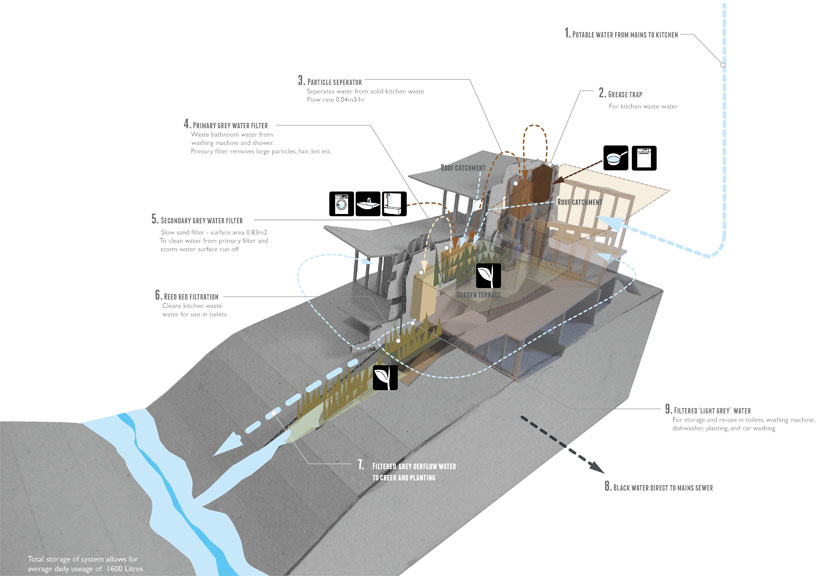







| Project | Riparian House |
| Brief | International competition entry to effect change in water usage in the western states of North America |
| Date | 2011 |
| Location | Reno, Nevada, North America |
Water has seeded human settlement across the world, yet many modern developments turn their back on it.
In this international ideas competition to propose new solutions to combat water stress in US we proposed a radical alternative to a very typical ‘cookie-cutter’ residential development known as River Park in Reno, Nevada, situated in a high desert valley. It was built between 1995 and 2002 and is typical of developments throughout the West. Reno relies on snowpack in the mountains for water but rights to the river are contested and little is left for the endangered Cui fish of the Native Americans at Pyramid Lake. River Park has wide paved streets and large detached houses. The design pays no heed to the landscape and buries tributaries under the streets.
Our proposal has comparable types and numbers of houses, but is sensitive to its environment and has sustainable water and energy systems at all scales. Based on five basic principles, we believe it creates a healthier community while maintaining economic viability.
The form of the house expresses the path of water through the house, from input to output, in five stages from the cleanest drinking water to grey water for flushing and nutrient-rich irrigation. The design is based on the principle of making manifest the usually hidden infrastructural aspects of our lives, both as a way of raising awareness of our environmental impact and as a source of poetic expression, informing and enriching the architectural expression of the house.
In this international ideas competition to propose new solutions to combat water stress in US we proposed a radical alternative to a very typical ‘cookie-cutter’ residential development known as River Park in Reno, Nevada, situated in a high desert valley. It was built between 1995 and 2002 and is typical of developments throughout the West. Reno relies on snowpack in the mountains for water but rights to the river are contested and little is left for the endangered Cui fish of the Native Americans at Pyramid Lake. River Park has wide paved streets and large detached houses. The design pays no heed to the landscape and buries tributaries under the streets.
Our proposal has comparable types and numbers of houses, but is sensitive to its environment and has sustainable water and energy systems at all scales. Based on five basic principles, we believe it creates a healthier community while maintaining economic viability.
The form of the house expresses the path of water through the house, from input to output, in five stages from the cleanest drinking water to grey water for flushing and nutrient-rich irrigation. The design is based on the principle of making manifest the usually hidden infrastructural aspects of our lives, both as a way of raising awareness of our environmental impact and as a source of poetic expression, informing and enriching the architectural expression of the house.



